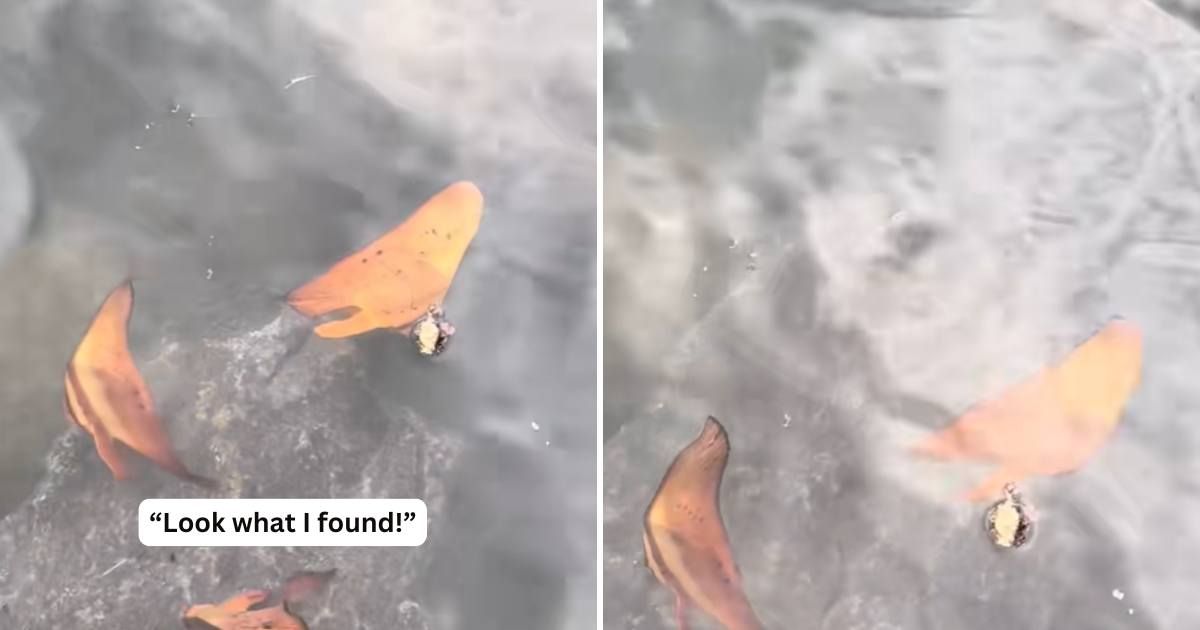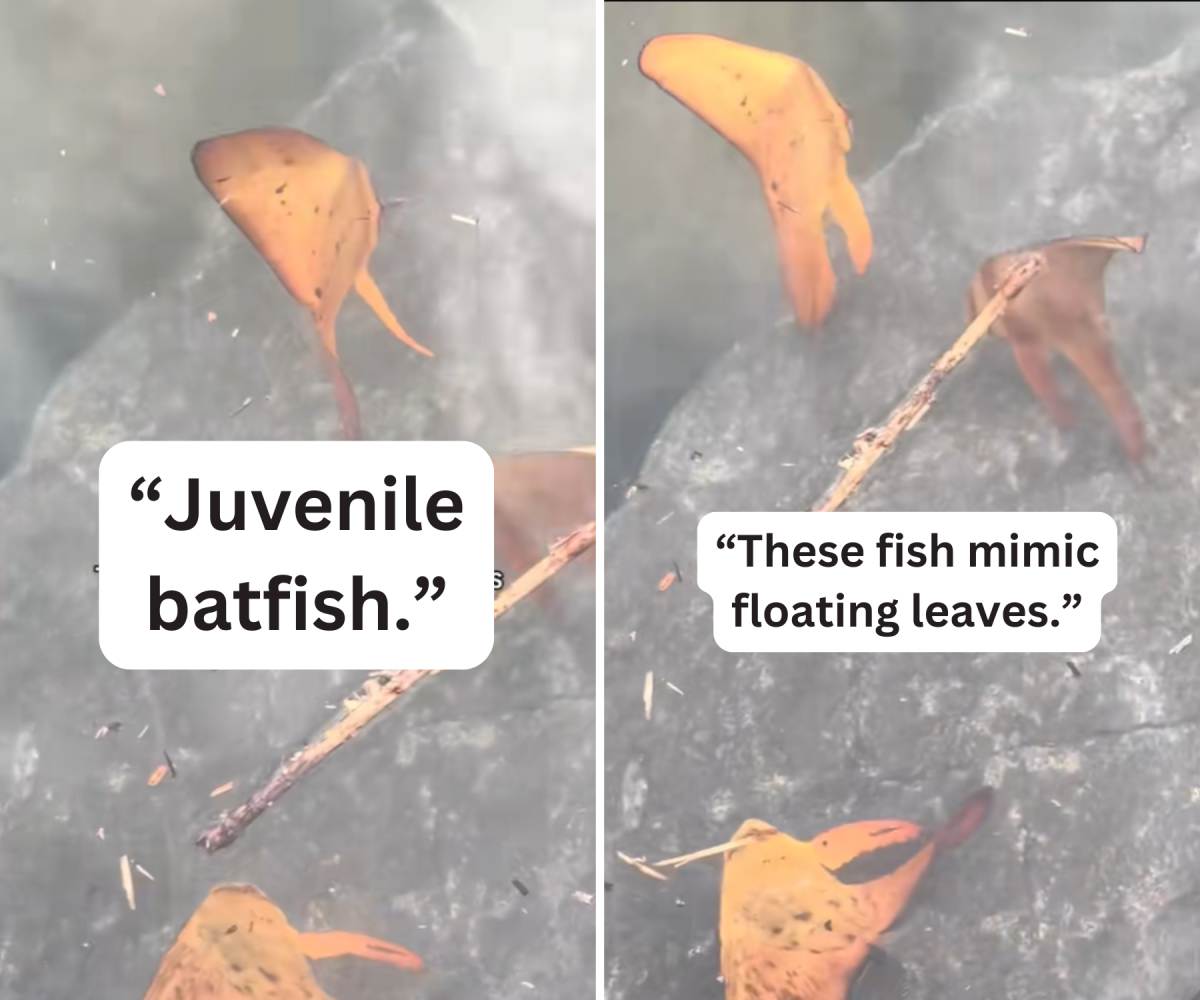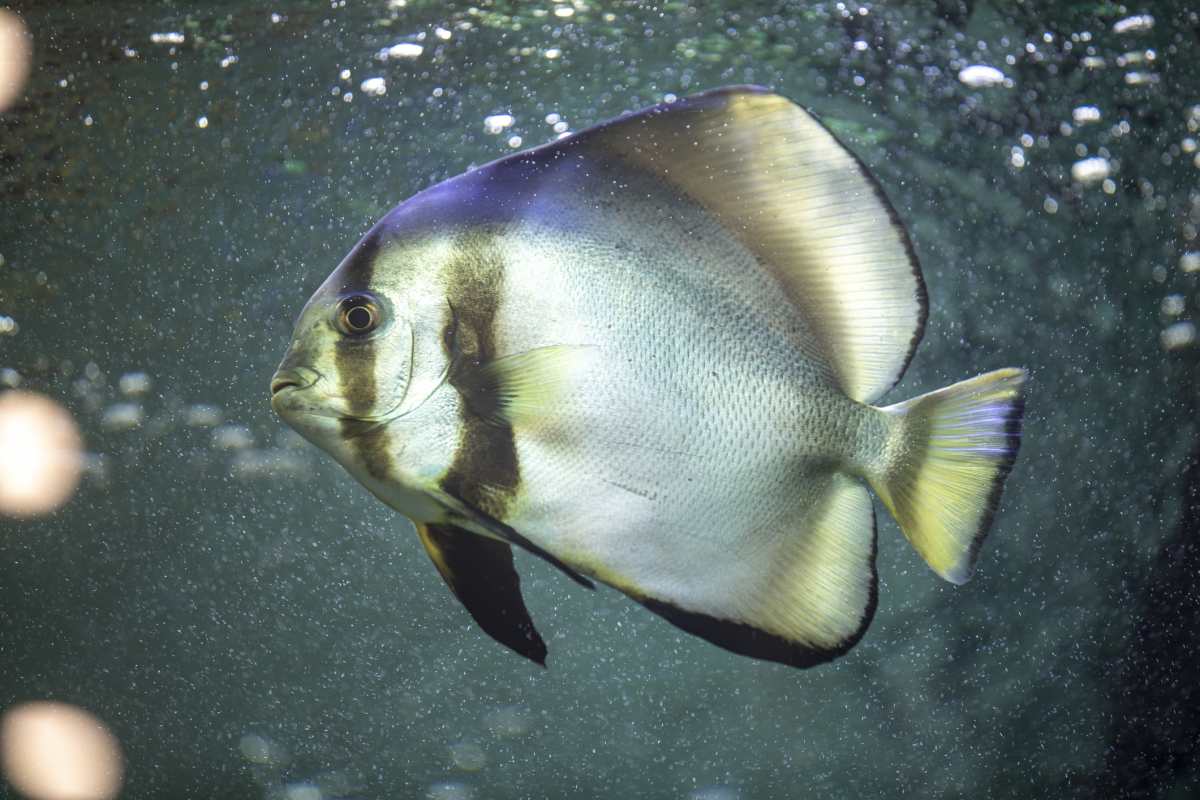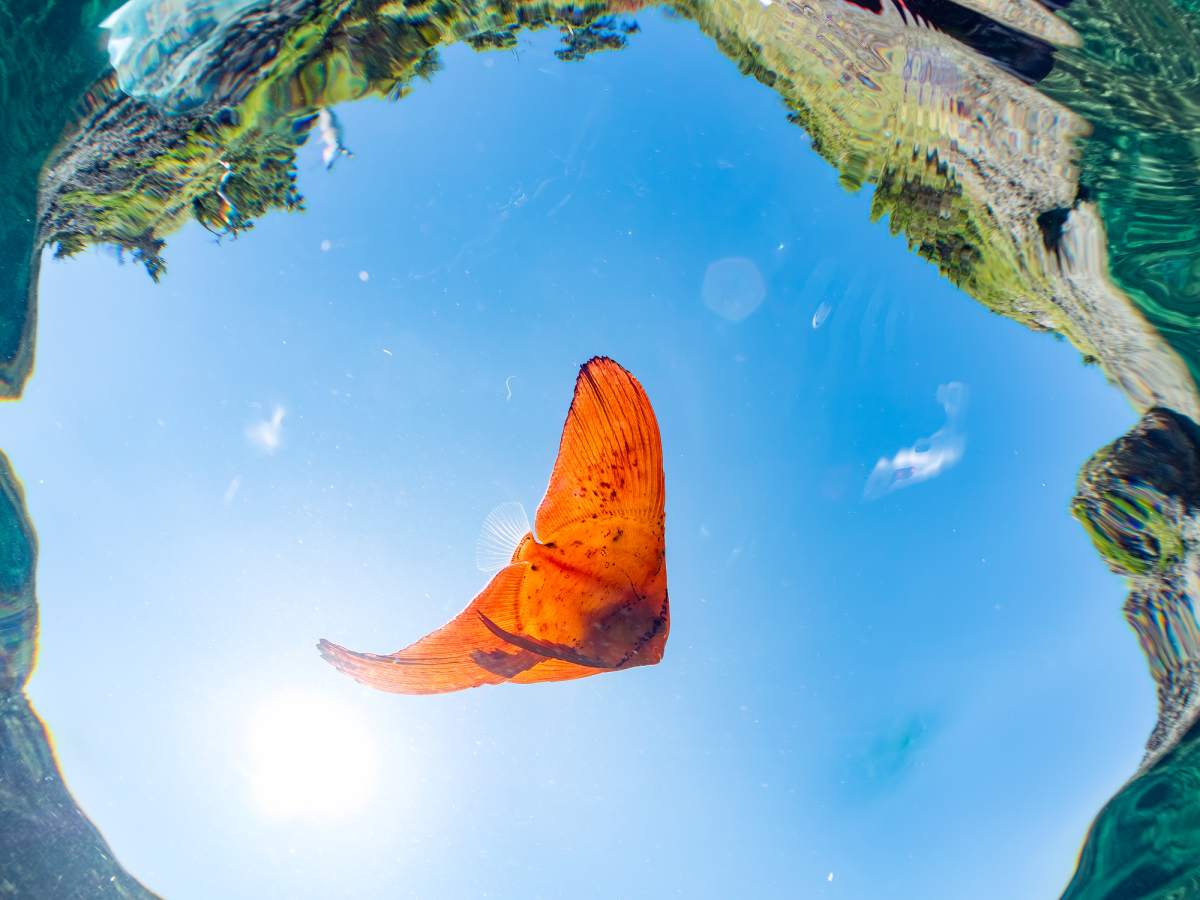Photographer Spots Orange Leaves in the Waters of an Australian Bay — Then, They Start Moving

Theresa Graham (@t.graham_) was just ambling across the stretch of golden sand in Port Douglas, Cairns Marina, in Australia, with a camera strapped to her shoulders. But when she lowered the camera and focused it on the rippling turquoise waters, it seemed the ocean had indeed chosen her to witness something magical. The onlookers passing by appeared perplexed and puzzled, looking at her, as she stared, spellbound, into the tropical waters. But Graham, seemingly unaffected by the attention, couldn’t believe what she saw in the water. Orange-colored leaves suddenly turned into fish, or perhaps they always were.

Graham is a photographer, storyteller, and drone pilot who wanders around the country, filming surreal naturescapes and sharing them with her fans. From capturing the surreal rhythms of a saltwater crocodile’s tail to filming a dolphin leaving a trail of whitish poop in turquoise waters and exploring a secret paradise of cascading waterfalls, her social media feeds are rambling with a patchwork of nature’s beauty. This particular footage captured an unusual sight in an Australian beach: a fish that mimics leaves.

The footage opens with a breathtaking shot of Queensland’s state-of-the-art floating marina tucked in the heart of Cairns’ city center, overlooking the Great Barrier Reef, brackish seagrass beds, and bustling city life. As she walked closer to the boardwalk and panned the camera to focus on the waters below, her eyes could not spot the deception. Amidst the fringing soft corals, some orange-colored leaves are drifting in the waters. The leaves appeared to feature an autumnal color palette, ranging from dark orange to burnt sienna. But soon enough, Graham realized that there was something fishy about these leaves.

It took a few moments for her to realize that she wasn't seeing dead leaves, but juvenile batfishes following a cryptic deception strategy. The fish were “mimicking leaves” as a strategy to ambush prey and protect themselves from predators. According to Dive Point Maldives, this behavior is quite common among juvenile batfish. The fish camouflages its wing-like, pointed dorsal and anal fins as parts of leaves and folds its triangular-shaped body in such a way that causes the predator to be confused and run. In this footage, the animals' mimicry made them look as if they had been flattened by a rolling pin.

“He/she was really a beauty, and kept looking sideways right at me,” Graham described on Instagram. In a conversation with The Dodo, she added, “They look exactly like leaves. Even the way they move and float, drifting in the current ever so gently.” She revealed that it was love at first sight. When she saw this fish for the first time, it left her mesmerized, because the deceptive strategy was so brilliant that she couldn’t have figured out its true identity unless she looked at the fish from certain, specific angles.

“I watched this three times before I believed in my soul that they were fish,” @twiztedsinz, a viewer, commented. @lorid said, "I had to watch 3x before I saw they were fish. super cool!" @drelyn added, "I won’t lie, I thought you were schizophrenic for a good minute there, but that’s insanely cool!"
@t.graham_ The fish that mimic leaves - Juvenile Batfish. A behind the scenes clip that I filmed and sent to a friend. Excuse the voice 😂, I was a little bit excited finding and filming them! Frankie is very much used to me randomly stopping and filming, she just sits and waits patiently now. It’s mostly on our walks I find the cool stuff like this. #wildlife #nature #marinebiology #cairns #fyp ♬ L'amore dice ciao (From "La matriarca - The Libertine") - Main Titles - Armando Trovajoli
You can follow Theresa Graham (@t.graham_) on TikTok to watch videos of surreal naturescapes.
More on Green Matters
Incredible Clip Shows an Octopus in Perfect Camouflage Catching Its Prey in the Depths of Red Sea
Scientists Find a 'Muppet'-Like Creature Under Pacific Ocean — Then, They Took a Closer Look
Biologists Witness First-Ever Instance of Baby Hummingbirds Acting Like Caterpillars as a Defense